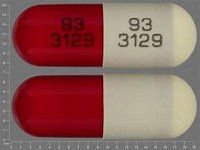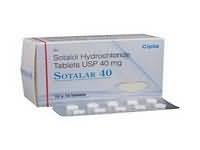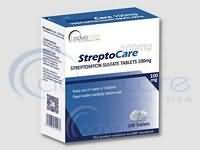disopyramide

disopyramide
CLINICAL USE
Ventricular and supraventricular arrhythmiasDOSE IN NORMAL RENAL FUNCTION
Oral: 300–800 mg daily in divided doses IV: 2 mg/kg over 5 minutes to a maximum of 150 mgInfusion: 400 mcg/kg/hour, maximum 300 mg in 1st hour and 800 mg dailyPHARMACOKINETICS
DOSE IN RENAL IMPAIRMENT
GFR (mL/MIN)
DOSE IN PATIENTS UNDERGOING RENAL REPLACEMENT THERAPIES
IMPORTANT DRUG INTERACTIONS
Potentially hazardous interactions with other drugsAnti-arrhythmics: increased myocardial depression with other anti-arrhythmics; amiodarone increases risk of ventricular arrhythmias – avoid concomitant useAntibacterials: concentration possibly increased by clarithromycin and erythromycin (risk of toxicity); increased risk of ventricular arrhythmias with moxifloxacin and quinupristin/dalfopristin – avoid concomitant use; concentration reduced by rifampicinAntidepressants: increased risk of ventricular arrhythmias with tricyclicsAntifungals: increased risk of ventricular arrhythmias with ketoconazole – avoid concomitant useAntihistamines: increased risk of ventricular arrhythmias with mizolastineAntihypertensives: increased myocardial depression and asystole with beta-blockers or verapamil; increased risk of ventricular arrhythmias with sotalol – avoidAntimalarials: avoid concomitant use with artemether/lumefantrineAntipsychotics: increased risk of ventricular arrhythmias with antipsychotics that prolong the QT interval and phenothiazines; increased risk of ventricular arrhythmias with amisulpride, pimozide and sertindole – avoid concomitant useAntivirals: concentration possibly increased by ritonavir, increased risk of toxicityAtomoxetine: increased risk of ventricular arrhythmiasCiclosporin: may increase risk of nephrotoxicity with ciclosporinDiuretics: increased cardiac toxicity if hypokalaemia occurs5HT 3 antagonists: increased risk of ventricular arrhythmias with dolasetron – avoid concomitant use; use tropisetron with cautionIvabradine: increased risk of ventricular arrhythmiasADMINISTRATION
Reconstition
–Route
Oral, IVRate of Administration
20–30 mg/hour (0.4 mg/kg/hour)Comments
May be given by peripheralIV infusion
in glucose 5%, sodium chloride 0.9% or compound sodium lactate.240 DISOPYRAMIDeOTHER INFORMATION
Use with caution in patients with impaired renal functionDo not give renally impaired patients sustained release preparationsOptimum therapeutic plasma level 2–6 mg/LHaemoperfusion can be used in cases of severe poisoning.
See how to identify renal failure stages according to GFR calculation
See how to diagnose irreversible renal disease
Home








